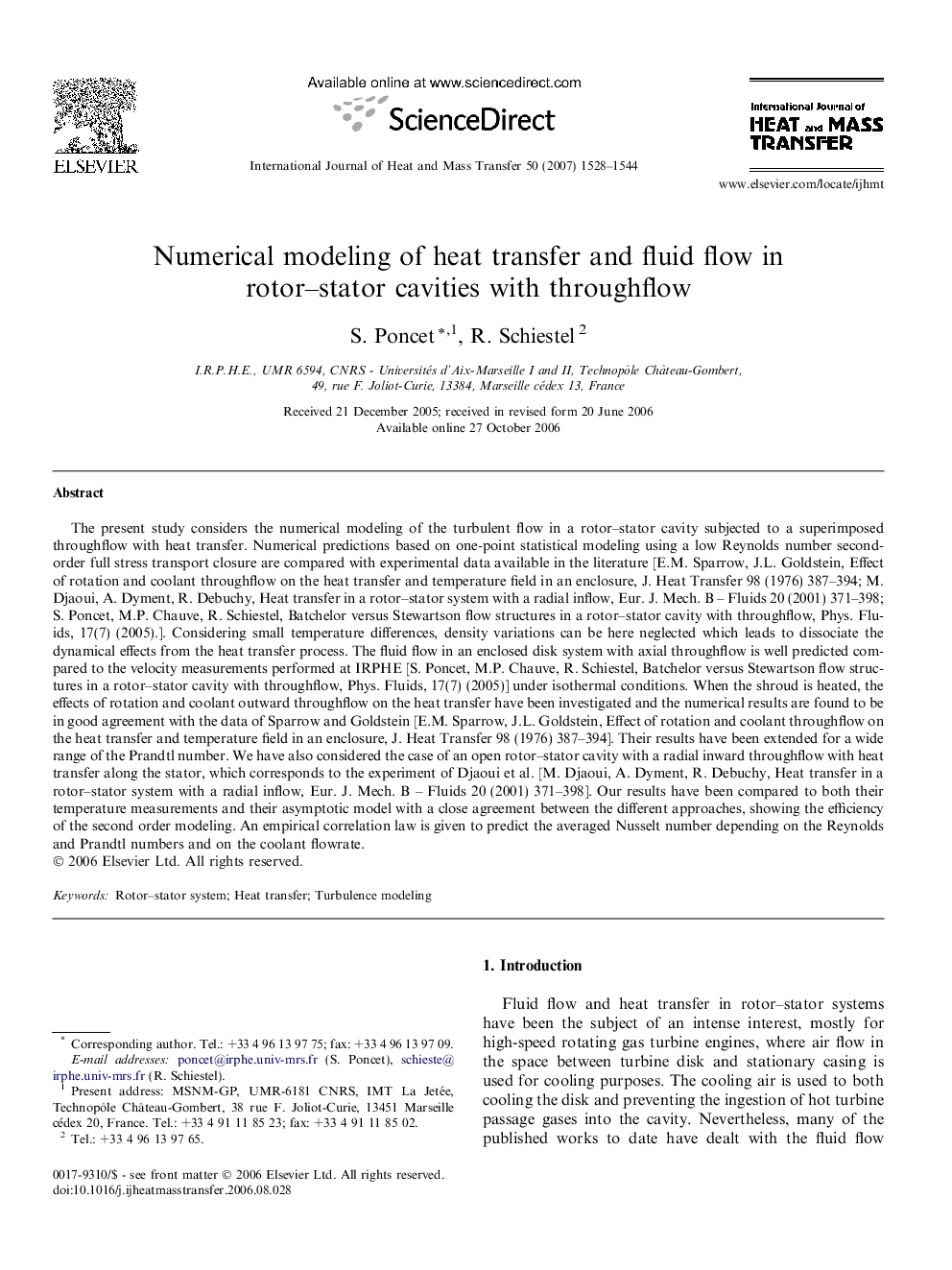| Article ID | Journal | Published Year | Pages | File Type |
|---|---|---|---|---|
| 661096 | International Journal of Heat and Mass Transfer | 2007 | 17 Pages |
The present study considers the numerical modeling of the turbulent flow in a rotor–stator cavity subjected to a superimposed throughflow with heat transfer. Numerical predictions based on one-point statistical modeling using a low Reynolds number second-order full stress transport closure are compared with experimental data available in the literature [E.M. Sparrow, J.L. Goldstein, Effect of rotation and coolant throughflow on the heat transfer and temperature field in an enclosure, J. Heat Transfer 98 (1976) 387–394; M. Djaoui, A. Dyment, R. Debuchy, Heat transfer in a rotor–stator system with a radial inflow, Eur. J. Mech. B – Fluids 20 (2001) 371–398; S. Poncet, M.P. Chauve, R. Schiestel, Batchelor versus Stewartson flow structures in a rotor–stator cavity with throughflow, Phys. Fluids, 17(7) (2005).]. Considering small temperature differences, density variations can be here neglected which leads to dissociate the dynamical effects from the heat transfer process. The fluid flow in an enclosed disk system with axial throughflow is well predicted compared to the velocity measurements performed at IRPHE [S. Poncet, M.P. Chauve, R. Schiestel, Batchelor versus Stewartson flow structures in a rotor–stator cavity with throughflow, Phys. Fluids, 17(7) (2005)] under isothermal conditions. When the shroud is heated, the effects of rotation and coolant outward throughflow on the heat transfer have been investigated and the numerical results are found to be in good agreement with the data of Sparrow and Goldstein [E.M. Sparrow, J.L. Goldstein, Effect of rotation and coolant throughflow on the heat transfer and temperature field in an enclosure, J. Heat Transfer 98 (1976) 387–394]. Their results have been extended for a wide range of the Prandtl number. We have also considered the case of an open rotor–stator cavity with a radial inward throughflow with heat transfer along the stator, which corresponds to the experiment of Djaoui et al. [M. Djaoui, A. Dyment, R. Debuchy, Heat transfer in a rotor–stator system with a radial inflow, Eur. J. Mech. B – Fluids 20 (2001) 371–398]. Our results have been compared to both their temperature measurements and their asymptotic model with a close agreement between the different approaches, showing the efficiency of the second order modeling. An empirical correlation law is given to predict the averaged Nusselt number depending on the Reynolds and Prandtl numbers and on the coolant flowrate.
